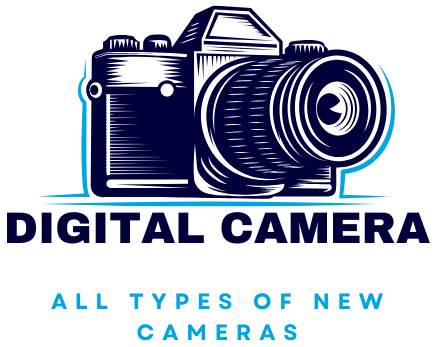The role of drones with 4K cameras in environmental and wildlife conservation
| We've carefully selected the BEST drone cameras available on Amazon at unbeatable prices just for you ! Capture stunning aerial views, whether you're a hobbyist or a professional. Don't miss out - click HERE to explore the TOP OPTIONS for high-quality, budget-friendly drone cameras. Team Best Digital Camera |
The Role of Drones with 4K Cameras in Environmental and Wildlife Conservation
In recent years, the use of drones equipped with 4K cameras has revolutionized the fields of environmental and wildlife conservation. These aerial devices provide unique opportunities to monitor ecosystems, track animal populations, and conduct research in ways that were previously difficult or impractical. This article will delve into how 4K camera drones are contributing to conservation efforts, their benefits, practical tips, and real-world case studies.
Understanding the Technology: Drones and 4K Cameras
Drones, or Unmanned Aerial Vehicles (UAVs), have gained popularity due to their versatility and accessibility. When equipped with high-resolution 4K cameras,they can capture detailed imagery and videos from various altitudes,making them invaluable tools in conservation.
- High-Resolution Imagery: 4K cameras deliver stunning clarity and resolution, enabling researchers to see details that might be missed from the ground.
- Accessibility: Drones can easily access remote or difficult terrains without putting humans at risk.
- Real-Time Data Collection: Drones can quickly gather data, which is critical for timely decision-making in conservation efforts.
Benefits of Using Drones in Conservation
The integration of drones into conservation practices offers a multitude of benefits, including:
1. Enhanced Data Collection
Drones provide unprecedented aerial data that aids in:
- Mapping vegetation and habitat distributions
- Identifying changes in land use and ecosystem health
- Monitoring water quality in lakes and rivers
2. Wildlife Monitoring
Tracking animal movements and behaviors is crucial for species protection, and drones produce effective results:
- Using thermal imaging to track nocturnal wildlife
- Documenting breeding patterns through aerial observations
- Surveying animal populations without disturbing habitats
3. Cost-Effectiveness
Compared to traditional methods, drones are often more cost-effective:
- Reducing the need for extensive manpower
- Minimizing travel expenses to remote locations
- Decreasing the time required to gather data
4. Promoting Conservation Awareness
Stunning aerial footage can help raise awareness about environmental issues:
- Creating captivating content for educational programs
- Engaging the public through social media storytelling
- Supporting advocacy efforts with compelling visual evidence
Practical Tips for Using Drones in Conservation
When implementing drone technology in conservation efforts, the following tips can enhance the effectiveness of your projects:
1. Understand the Regulations
Familiarize yourself with local regulations regarding drone flying, especially in sensitive areas.
2. Choose the Right Drone
| Drone Type | Key Features | Best For |
|---|---|---|
| Quadcopter | Stability, maneuverability | Detailed monitoring in small areas |
| Fixed-Wing | Long flight duration, larger coverage | Mapping large ecosystems |
| hybrid | Best of both worlds | Versatile activities |
3. Utilize Advanced Software
Leverage software that can process and analyze drone data for meaningful insights, such as GIS (Geographic Details System) applications.
4. Collaborate with Experts
Partner with wildlife biologists, ecologists, or drone specialists to maximize the impact of your conservation efforts.
Case Studies: Prosperous Examples of Drones in Conservation
Numerous organizations have adopted drones with 4K cameras to achieve remarkable results in conservation:
1. The Ocean Cleanup Project
This initiative has utilized drones to monitor plastic pollution in oceans and rivers, aiding efforts to develop effective cleanup strategies.
2. Save the Elephants
In Kenya, researchers use drones to track elephant movements and mitigate human-wildlife conflicts. The data helps manage safe migration routes and prevent poaching.
3. Project Manta
In Australia, drones are being used to track manta ray populations, providing data on their breeding grounds and helping in their protection.
First-Hand Experiences with Drones in Conservation
Professionals in the field have shared thrilling experiences using drones:
“Using a drone with a 4K camera allowed us to view the erosive patterns along coastal lines. We could monitor changes over time and engage local communities with visual data that emphasized the urgency of conservation efforts,” shares a marine conservationist.
This firsthand experience highlights how drones can bridge the gap between complex data and community understanding, fostering a collective approach to conservation.
Conclusion
Drones equipped with 4K cameras are transforming the way we approach environmental and wildlife conservation. From enhanced data collection and wildlife monitoring to promoting awareness and cost-effectiveness, the applications are limitless. As we continue to understand and integrate drone technology into conservation practices,we not only improve our strategies but also inspire communities to engage with these vital efforts. Embracing future innovations will further empower conservation initiatives globally, ensuring that our planet’s natural resources are protected for generations to come.
| Don't miss out - click HERE to explore the TOP OPTIONS for high-quality, budget-friendly drone cameras. Team Best Digital Camera |
